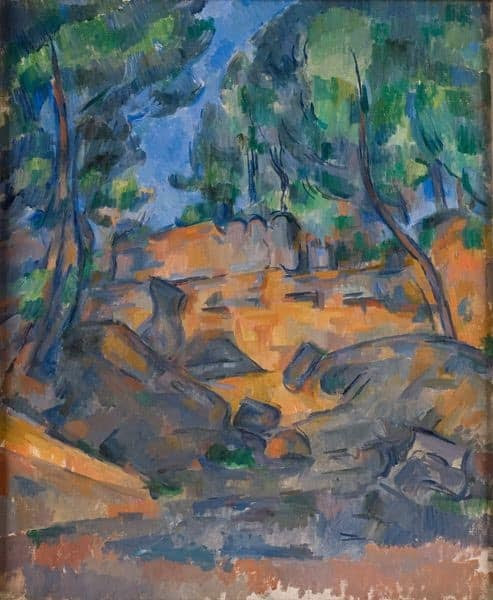Princeton University Art Museum is presenting “Cézanne: The Rock and Quarry Paintings”, an exhibition examining underestimated aspects of Cézanne’s work.
According to museum officials, the exhibition examines the French painter’s interest in rocks and geological formations, and his use of such structures to shape the compositions of his canvases.
The exhibit is organized by the Princeton University Art Museum in association with the Royal Academy of Arts, London and will be on display in Princeton from March 7 until June 14, before being shown in London.
Admission to see this new exhibit is free.
Three of the principal areas of France in which Cézanne (1839-1906) painted landscapes are full of rocky terrain: the Forest of Fontainebleau, southeast of Paris; L’Estaque, a village in Provence on the Mediterranean coast immediately above Marseille; and the area around Aix-en-Provence, his birthplace.
With significant loans from museum and private collections in the U.S. and abroad, the exhibition features approximately 15 of the 24 canvases that the artist made at these sites, supplemented by selected watercolors.
Officials added that the exhibition is curated by John Elderfield, distinguished curator and lecturer at the Princeton University Art Museum.
“This historic project highlights an essential body of work by a monumental artist that has not previously been the focus of such concentrated scholarship,” said James Steward, Nancy A. Nasher–David J. Haemisegger, class of 1976, director. “The exhibition and publication of these profound, provocative and deeply rigorous compositions afford remarkable insights into the career of a canonical artist and are a fitting finale to John Elderfield’s time here at Princeton.”
With its rocky terrain, quarries and ancient stone caves, the landscape of Provence had been an established subject for plein air painters for more than a century before Cézanne began working outdoors there. His own interest in depicting geological formations dates to the middle of the 1860s.
According to officials, Cézanne and a close friend from his youth, Antoine-Fortuné Marion (1846-1900), who went on to become a noted geologist and paleontologist, first began painting the rocks on the Mediterranean coast and visited caves that had been used as prehistoric dwellings. Informed by these early experiences, Cézanne would explain that, when painting a landscape, he had to understand its underlying structure.
Cézanne’s unpopulated paintings of rocks and quarries embody a distanced, formalized view of nature as having its own, ancient order, which he built up with conspicuously assembled, flat patches of paint.
Museum officials said while this method aimed at a true representation of the external visual world, it was deeply influential upon early 20th-century artistic developments toward abstraction.
Both Henri Matisse and Pablo Picasso reportedly said, “Cézanne is the father of us all.”
For more information about the exhibit, visit www.artmuseum.princeton.edu.

